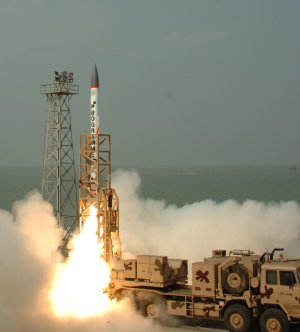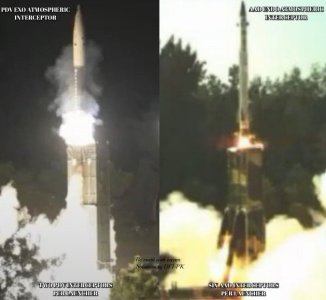Prospects for India’s BMD Program
Such an extensive and full-fledged BMD program has many prospects for further growth and development:
Strategic Autonomy.
India has been investing in developing advanced technologies for its BMD program, including interceptor missiles, radar systems, and command and control infrastructure. These have been made indigenously for the most part, thereby making India capable and self-reliant technologically. Continued testing and validation are then essential to improve the reliability and effectiveness of the BMD system.
Prospects here include successful testing of the interceptors under different scenarios, leading to a higher confidence level in the system’s performance. The technological advancements could further lead to improved interception capabilities and enhanced performance of the BMD system. It will also help increase the range, accuracy and other parameters thus including a wider geographical area. This in itself has its own consequences for the regional and global balance of power.
From a geopolitical perspective, this BMD initiative also indirectly benefits from India’s close cooperation with foreign countries like the US and Israel, and from it being a part of globally influential bodies like the MTCR, which gives the country access to high-end technology.
Flexibility.
India’s BMD program aims to establish a multi-layered defence by integrating different types of interceptors and systems. This provides increased flexibility in countering various types of ballistic missiles. India has also engaged in defence cooperation with various countries, which could potentially lead to knowledge-sharing, joint development, and collaborative research in the field of BMD.
India can also look forward to helping its immediate neighbours by using its BMD capabilities to safeguard their airspaces, as these nations do not have the resources to pursue their own BMD programs. Further, India can look forward to exporting some of its BMD components like interceptors, radars, and short and medium range SAM systems to friendly foreign countries.
Strategic Deterrence. A robust BMD program can enhance strategic deterrence by demonstrating the country’s ability to defend against potential missile threats. This could influence adversaries’ perceptions of India’s defence capabilities and potentially impact their strategic calculations.
Challenges to India’s BMD Program
The Indian BMD program does face some challenges, internally as well as externally, which impact its planning, deployment and usage:
Pakistan
India had been preparing for a two-front war scenario for many years because it faces a ballistic missile threat, directly from both Pakistan and the PRC. While Pakistan’s missile and nuclear program is India-centric, India has developed its nuclear, missiles and BMD capabilities keeping in mind the Chinese threat.
On the level of scale, Pakistan has a range of tactical missiles like Hatf-1 and ballistic missiles like Ghaznavi, Babur, Abdali, Shaheen, Nasr etc. These missiles can strike up to a range of 3,000 km, a range that covers the entire Indian territory. Pakistan is now working to develop the Multiple Independently Targetable Re-entry Vehicle (MIRV) technology, which enables a single ballistic missile to release multiple warheads on the enemy, simultaneously. Accordingly, this requires the defending entity to fire at least two interceptor missiles, separately, for every warhead released by the incoming hostile missile. Media reports in 2017 indicated that Pakistan has already developed and tested the MIRV technology on its newly developed Ababeel ballistic missile.
China. A bigger concern than Pakistan is the PRC which is known to have a well-developed nuclear program, ballistic missile program and a fully deployed BMD system. It is also known that Pakistan and the PRC have good collaborations and share military technologies with each other, since India is the common adversary for both. The PRC seeks to compete with the US, in almost every domain, at the global level, and has developed its armed forces and arsenal accordingly. Its ballistic missiles have a range of more than 12,000 km and the PRC also possesses anti-satellite capabilities. Having a strong economy and a huge manufacturing base enables the Chinese to stay ahead of India in all domains, quantitatively as well as qualitatively. In the MIRV domain, the PRC has capabilities comparable to those of US and Russia. A major concern for India here is that the PRC may proliferate these technologies to rogue states like Pakistan thereby negating India’s conventional advantage over Pakistan.
Cost and Resources. Overcoming technical challenges related to sensors, interceptors, command and control systems, and integration can be daunting. This exercise is also financially demanding. Securing adequate funding and allocating resources for research, development, testing, and deployment has always been a significant challenge in India, where most of the annual defence budget is spent on revenue expenditure. India may have to hunt for export markets for some of its air-defence systems to cover the production costs, which will inevitably put India in conflict with existing market players, such as the Patriot, Terminal High Altitude Area Defence and Iron Dome. Thus, India will have to balance its security and geopolitical interests accordingly.
Adaptation and Evolution. Ensuring that the various components of the BMD system can work together seamlessly and coordinate with the existing defence infrastructure can be complex. India will have to eliminate the duplication and mixture of assets and follow standardised methods and protocols. The human error factor must also be considered while training the concerned staff. With the dawn of technologies like quantum computing and artificial intelligence, integrating them in the national security infrastructure will be a bigger challenge for India. Integrating the BMD capabilities with the existing military infrastructure requires careful planning to ensure smooth coordination and functioning during real-world scenarios. Also, as missile technology evolves, potential adversaries may develop more advanced and unpredictable missiles. India’s BMD program must stay ahead of these developments to remain effective. Rigorous testing and validation of BMD systems are thus crucial to ensure their reliability.
Conclusion
In its entirety, BMD is a very nuanced subject. Most of the data on this topic is classified. Therefore, all capabilities of such systems, available in the public domain are just projections, as countries do not share the actual capabilities of such sensitive technologies, and therefore all analysis is speculative.
However, the capability of a nation to possess these systems and demonstrate its abilities through continuous testing is necessary to have an edge over its adversaries. What is now needed for countries like India is to keep evolving their BMD systems qualitatively by heavily investing in research and development. By producing a sufficient number of these systems, economies of scale can be achieved in the long run, thus bringing down development costs.
In conclusion, India’s evolving BMD program underscores the significance of continuous research and development to maintain a technological edge in contemporary warfare. While specific capabilities remain classified, India’s commitment to enhancing its BMD systems contributes to self-reliance in its national defence as well as regional security and reinforces its position as a formidable force in the international arena.











